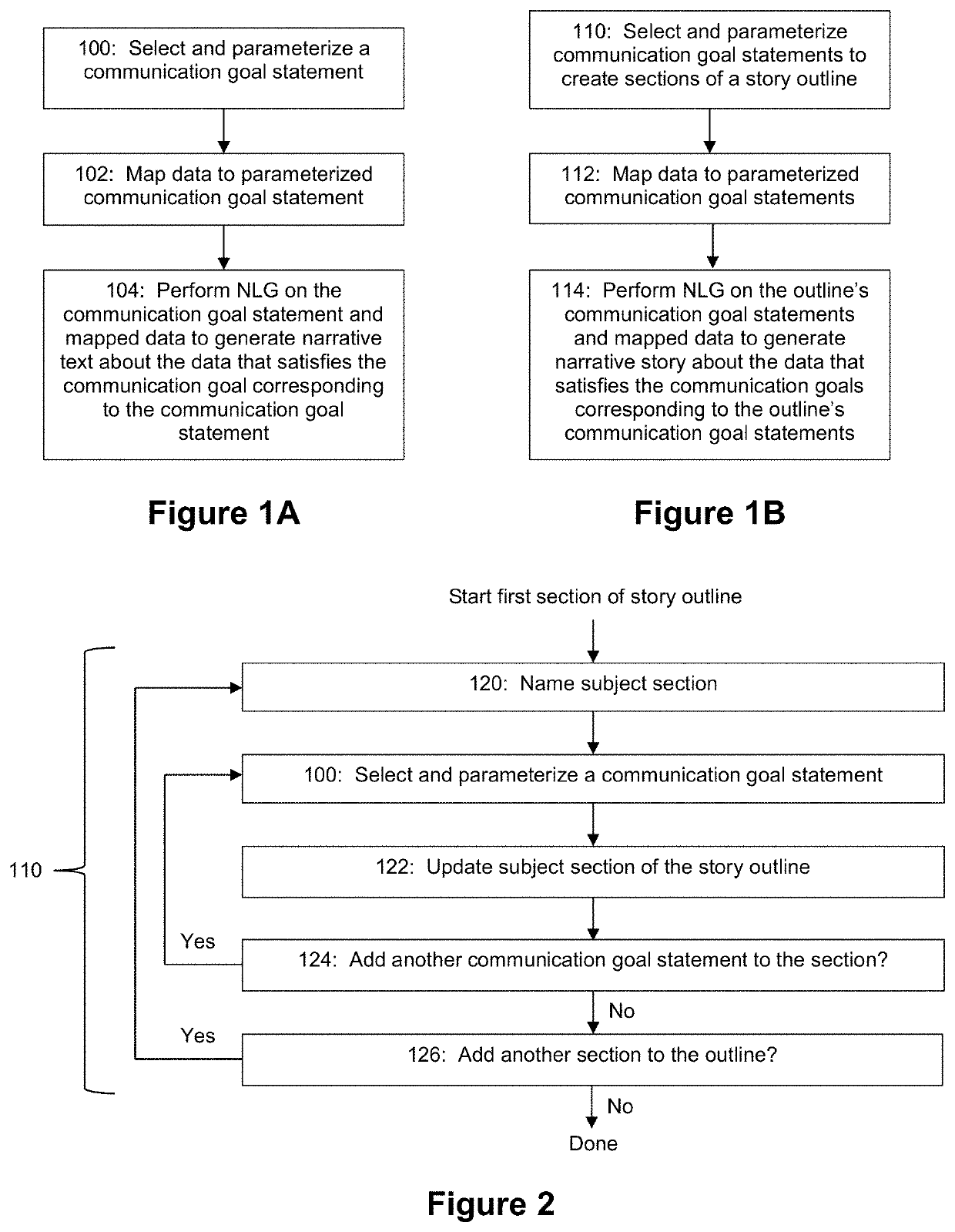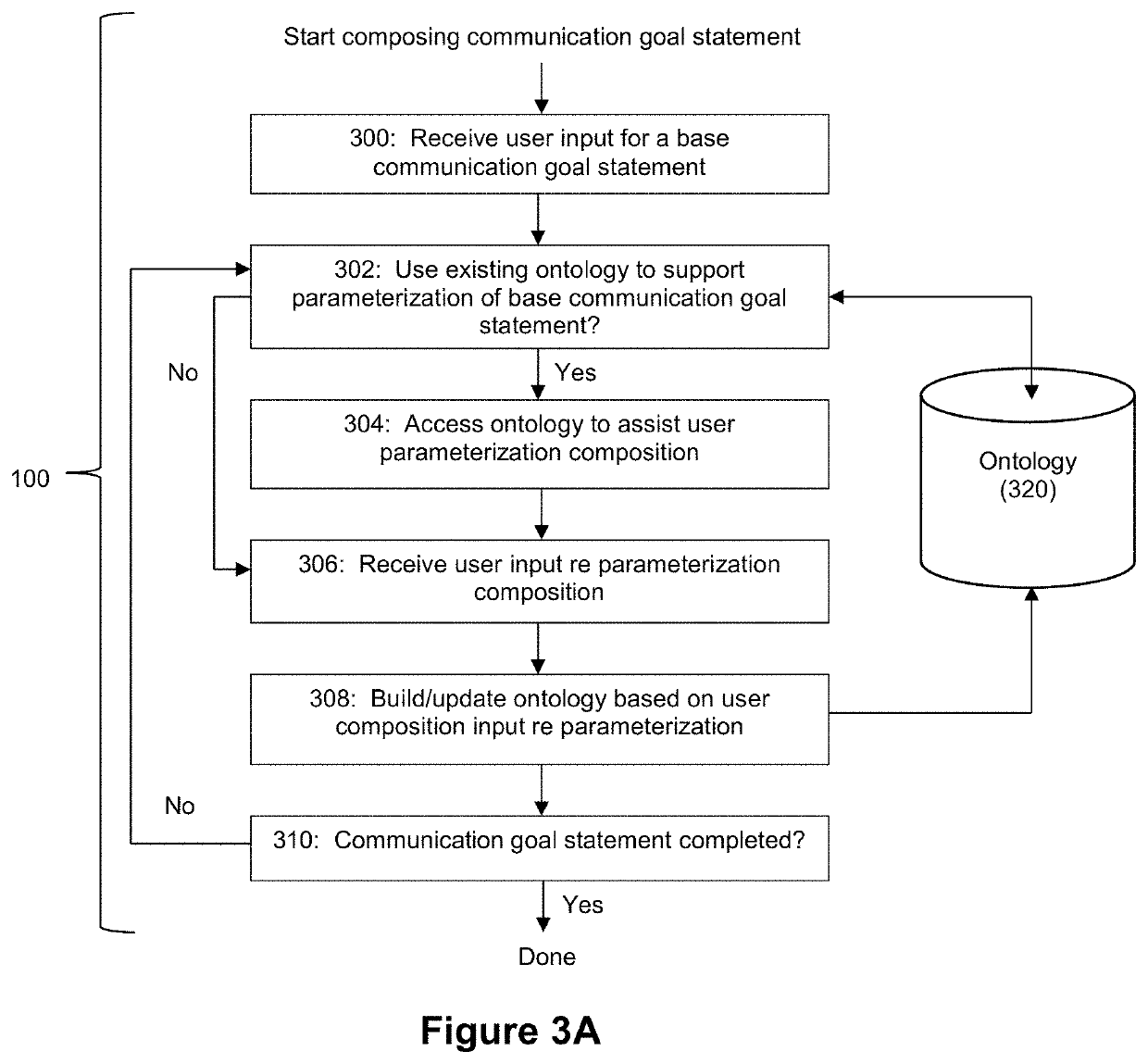Applied artificial intelligence technology for narrative generation based on a conditional outcome framework
- Summary
- Abstract
- Description
- Claims
- Application Information
AI Technical Summary
Benefits of technology
Problems solved by technology
Method used
Image
Examples
example narrative
Generation Architecture Using Composed Communication Goal Statements:
[0080]FIG. 5 depicts a narrative generation platform in accordance with an example embodiment. An example embodiment of the narrative generation platform can include two artificial intelligence (AI) components. A first AI component 502 can be configured to determine the content that should be expressed in a narrative story based on a communication goal statement (which can be referred to as “what to say” AI 502). A second AI component 504 can be configured to perform natural language generation (NLG) on the output of the first AI component 502 to produce the narrative story that satisfies the communication goal statement (where the AI component 504 can be referred to as “how to say it” AI 504).
[0081]The platform can also include a front end presentation layer 570 through which user inputs 572 are received to define the composed communication goal statement 390. This presentation layer 570 can be configured to allow...
PUM
 Login to View More
Login to View More Abstract
Description
Claims
Application Information
 Login to View More
Login to View More - R&D
- Intellectual Property
- Life Sciences
- Materials
- Tech Scout
- Unparalleled Data Quality
- Higher Quality Content
- 60% Fewer Hallucinations
Browse by: Latest US Patents, China's latest patents, Technical Efficacy Thesaurus, Application Domain, Technology Topic, Popular Technical Reports.
© 2025 PatSnap. All rights reserved.Legal|Privacy policy|Modern Slavery Act Transparency Statement|Sitemap|About US| Contact US: help@patsnap.com



